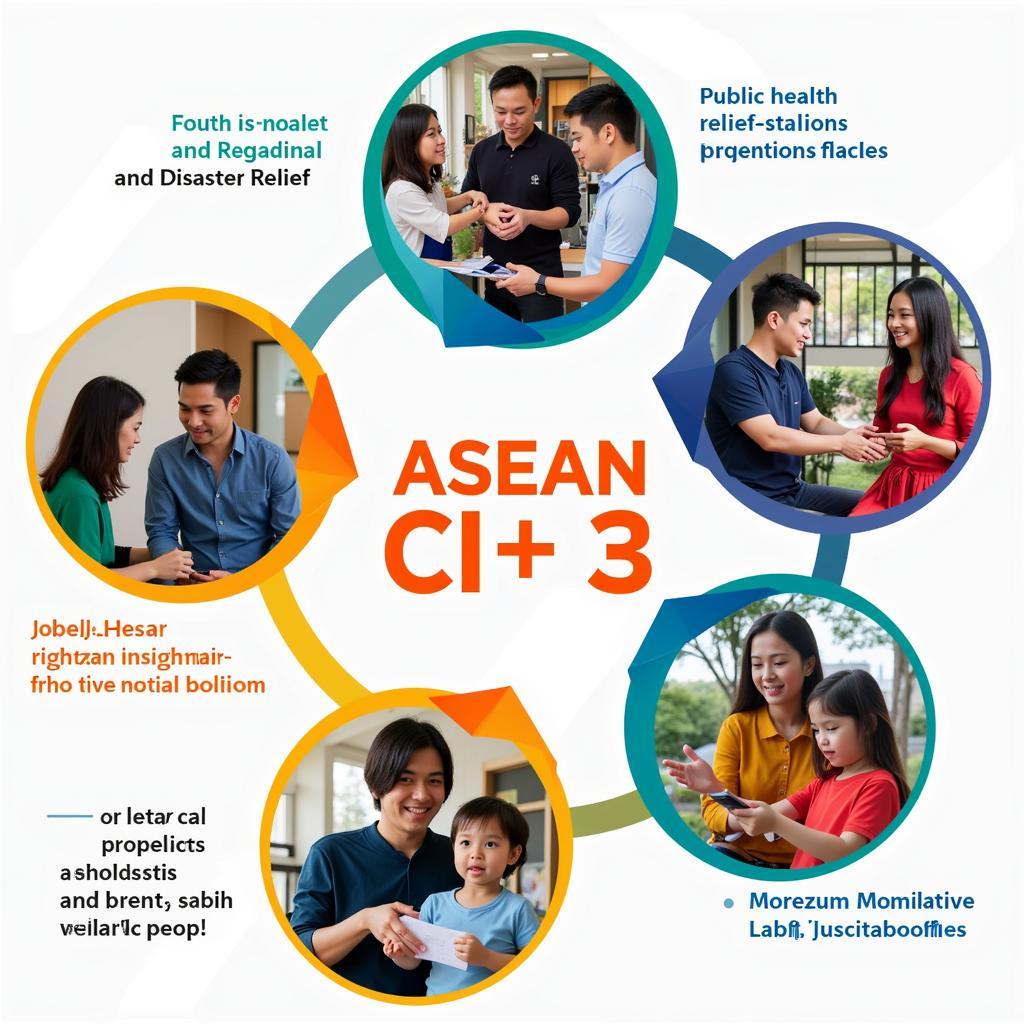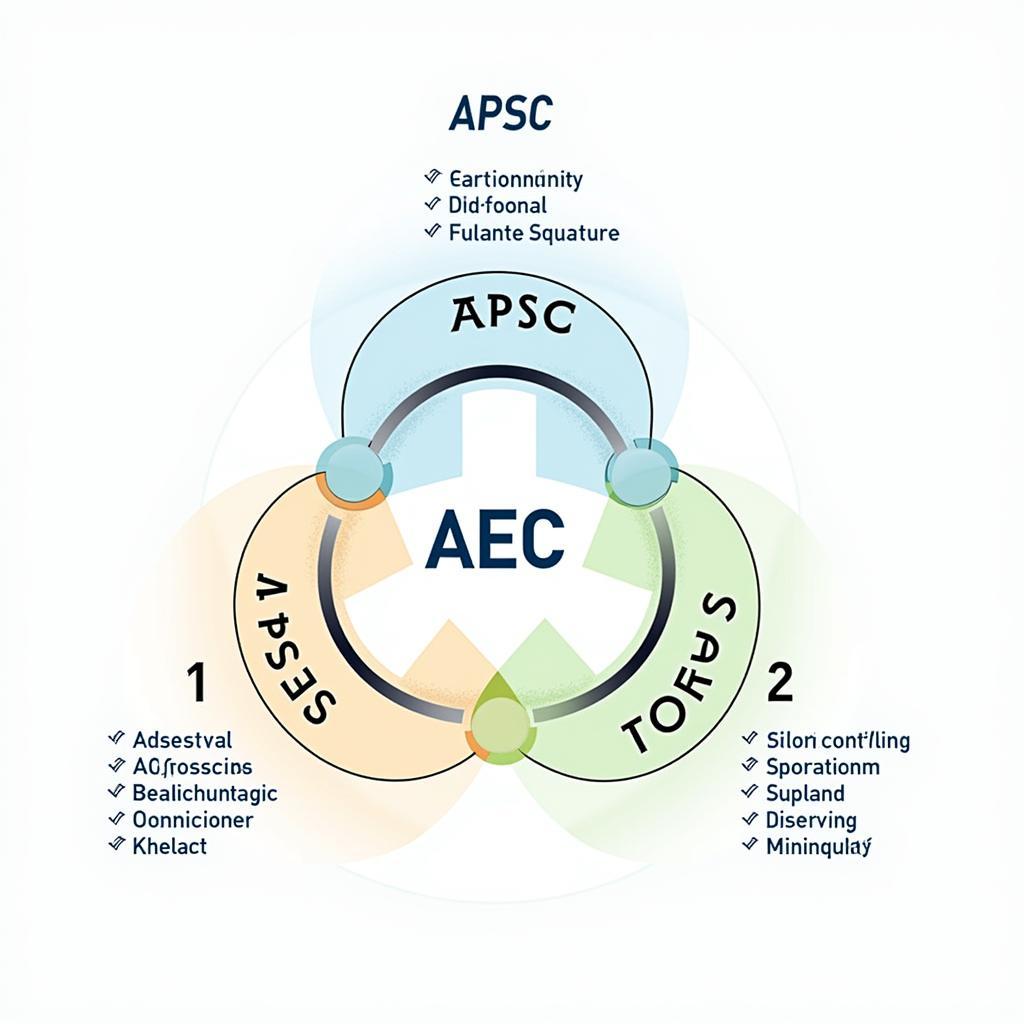Asean + 3 represents a vital platform for enhanced cooperation and integration within East Asia. Established in 1997 in response to the Asian financial crisis, this framework brings together the ten member states of ASEAN along with China, Japan, and South Korea, forging a powerful economic and political bloc. This collaboration fosters dialogue, strengthens partnerships, and promotes stability across the region.
Understanding the Significance of ASEAN + 3
The ASEAN + 3 mechanism plays a crucial role in addressing shared challenges and opportunities within East Asia. By fostering cooperation in diverse areas such as finance, trade, food security, energy, and public health, the framework contributes to regional resilience and prosperity. The +3 countries represent major economic players globally, and their inclusion elevates ASEAN’s position on the world stage. This strategic partnership allows for a more comprehensive and integrated approach to regional development, addressing the unique needs and priorities of each member nation. asean 3 explains the significance of this platform in detail.
What are the key benefits of ASEAN + 3? This collaborative framework provides a platform for:
- Enhanced economic cooperation through initiatives like the Chiang Mai Initiative Multilateralisation (CMIM)
- Improved financial stability and crisis management capabilities
- Increased trade and investment flows among member countries
- Strengthened regional security architecture
- Greater collaboration on social and cultural issues
 ASEAN + 3 Economic Cooperation
ASEAN + 3 Economic Cooperation
The Evolution of ASEAN + 3: From Crisis Response to Long-Term Vision
Initially conceived as a response to the 1997 financial crisis, ASEAN + 3 has evolved into a comprehensive framework for long-term regional cooperation. This evolution reflects the growing recognition of the interconnectedness of East Asian economies and the importance of collective action in addressing shared challenges. The mechanism has expanded its scope beyond financial cooperation to encompass a wider range of issues, including food security, energy cooperation, and disaster management. This demonstrates the adaptability and responsiveness of the framework to emerging regional needs. For more in-depth information, you can access detailed documents like asean 3 pdf.
What are the future goals of ASEAN + 3? The group aims to:
- Deepen economic integration through further trade liberalization and investment facilitation
- Strengthen regional connectivity through infrastructure development
- Promote people-to-people exchanges to enhance cultural understanding and cooperation
- Foster sustainable development initiatives addressing climate change and environmental protection
“The ASEAN + 3 mechanism provides a vital platform for dialogue and cooperation in addressing complex regional challenges,” states Dr. Anya Sharma, a leading economist specializing in Southeast Asian affairs. “It promotes a shared sense of responsibility and ownership in building a more prosperous and stable East Asia.”
 Future of ASEAN + 3 Collaboration
Future of ASEAN + 3 Collaboration
Addressing Regional Challenges Through ASEAN + 3
The ASEAN + 3 framework has been instrumental in tackling critical regional issues. The Chiang Mai Initiative Multilateralisation (CMIM), for example, has significantly strengthened regional financial safety nets. The framework also facilitates collaboration on non-traditional security challenges like pandemics, natural disasters, and food security. Through regular summits and ministerial meetings, ASEAN + 3 provides a platform for high-level dialogue and policy coordination. This regular interaction fosters trust and understanding among member states, enabling them to effectively address shared concerns.
939-9-ase-ambi offers further insights into the cooperative efforts within ASEAN + 3.
“ASEAN + 3 is more than just an economic partnership; it is a testament to the shared commitment towards regional stability and prosperity,” comments Professor Hiroki Tanaka, a renowned political scientist focusing on East Asian relations. “The framework provides a mechanism for collaborative problem-solving and strengthens regional resilience in the face of global challenges.”
 ASEAN + 3 Addressing Regional Challenges
ASEAN + 3 Addressing Regional Challenges
Conclusion
ASEAN + 3 has emerged as a cornerstone of regional cooperation in East Asia. This framework, encompassing ten ASEAN member states plus China, Japan, and South Korea, plays a crucial role in promoting economic integration, enhancing financial stability, and addressing shared challenges. As the region navigates an increasingly complex global landscape, the ASEAN + 3 mechanism will continue to be vital in fostering dialogue, strengthening partnerships, and building a more resilient and prosperous East Asia. For more specific resources, take a look at asean 3 bond market guide 2018 republic of korea. ase 3000 also offers related information.
FAQ
- What does ASEAN + 3 stand for?
- When was ASEAN + 3 established?
- What are the key objectives of ASEAN + 3?
- How does ASEAN + 3 contribute to regional stability?
- What are some examples of successful ASEAN + 3 initiatives?
- What are the future plans for ASEAN + 3 cooperation?
- How can I learn more about ASEAN + 3?
When you need support, please contact Phone Number: 0369020373, Email: aseanmediadirectory@gmail.com Or visit us at: Ngoc Lien Village, Hiep Hoa, Bac Giang, Vietnam. We have a 24/7 customer service team.

